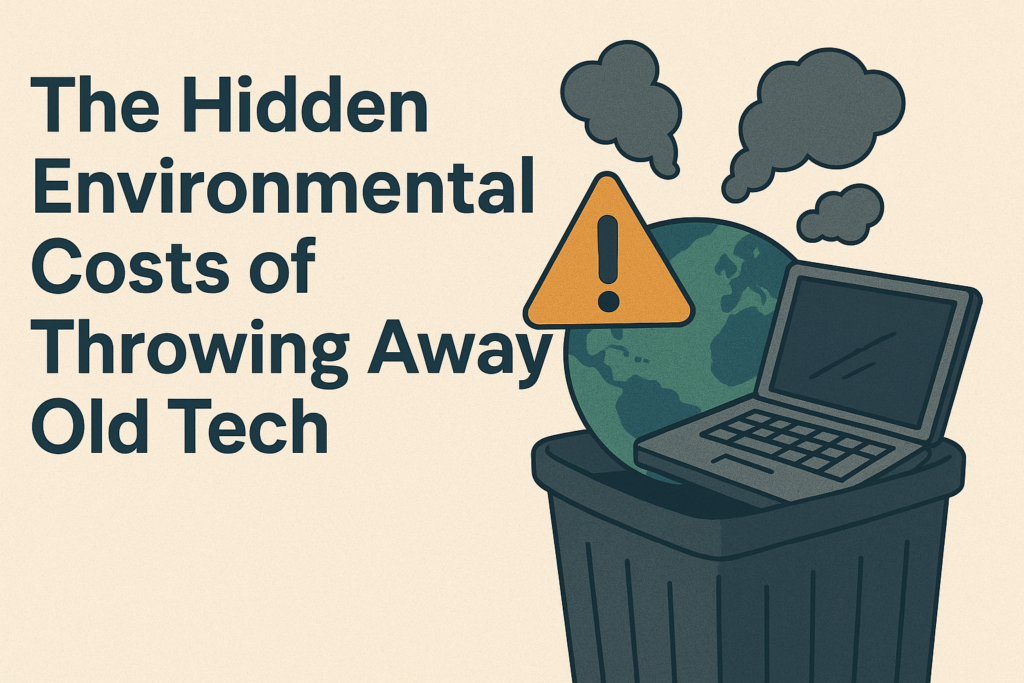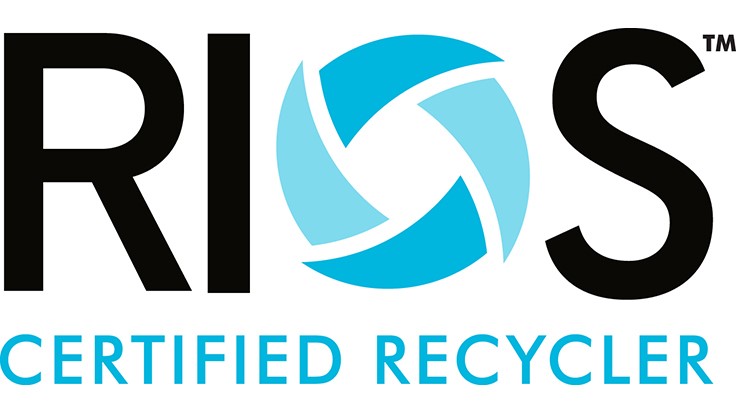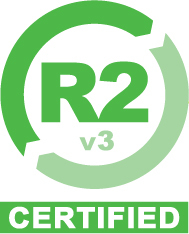
Tossing old electronics in the trash creates long-lasting environmental damage few people consider. That outdated laptop or broken smartphone contributes to a growing problem affecting soil, water, and air quality worldwide.
Toxic Materials in Landfills
Discarded electronics leach dangerous chemicals into soil and groundwater. Your seemingly harmless devices contain lead, mercury, cadmium, beryllium and flame retardants that poison ecosystems.
Most smartphones contain 60+ different elements. As these devices deteriorate in landfills, toxic compounds seep into water supplies and surrounding soil, with impacts lasting decades.
Weather exposure accelerates this contamination process. Rain and temperature changes break down casings faster, releasing concentrated pollutants that spread well beyond the dump site.
Wasted Resources and Raw Materials
The EPA reports Americans discard 2.9 million tons of electronics yearly. Only 20% gets recycled properly; the rest ends up in landfills, wasting recoverable materials.
Modern electronics rely on finite metals and minerals. In 2014 alone, manufacturers produced over 300 million computers and 2 billion smartphones. Mining these raw materials destroys habitats, pollutes water sources and disrupts entire ecosystems.
Recycling just one million phones recovers 35,000 pounds of copper, 772 pounds of silver, 75 pounds of gold and 33 pounds of palladium—resources that would otherwise require new mining operations.
Carbon Footprint of Device Production
The carbon impact of electronics starts at manufacturing. Creating a single smartphone generates 60 kg of CO2, while laptop production creates roughly 300 kg. Data center equipment produces even more emissions.
Raw material extraction alone accounts for 40% of these emissions. The supply chain includes mining, component fabrication, assembly and worldwide shipping—each phase increasing the carbon burden.
When we trash working or fixable devices, we fuel demand for new production, perpetuating this high-emission cycle unnecessarily.
Data Security Risks
Improper disposal threatens your digital security. Without proper data destruction, thrown-away devices expose:
- Personal details leading to identity theft
- Business information vulnerable to corporate espionage
- Private data violating regulations like HIPAA and Gramm-Leach-Bliley
Many falsely believe deleting files or factory resets remove sensitive information. Standard deletion merely hides data that remains recoverable.
Professional recycling services use NIST-standard data wiping software, physical destruction methods like shredding, and verified sanitization processes with documentation proving complete data removal.
Responsible Electronics Recycling: The Solution
Professional recyclers solve both environmental and security problems. They extract hazardous materials for safe handling, recover valuable components for reuse, permanently destroy data through certified methods, and refurbish viable devices to extend their useful life.
R2/RIOS certified facilities maintain strict industry standards protecting against environmental harm and data breaches. These certifications demand rigorous protocols, staff training and independent audits for compliance verification.
The Role of IT Asset Remarketing
Many “outdated” electronics hold untapped value. Asset remarketing programs evaluate devices, identifying those with market potential. Through cleaning, testing and component replacement, these items return to productive use.
Remarketing removes all identifying data before resale, protecting previous owners. Organizations benefit from unexpected revenue from assets they considered worthless.
This approach creates circular economy benefits by keeping functioning technology in circulation longer, cutting waste generation and reducing raw material demand for new production.
Take Action with eWaste Solutions
eWaste Solutions specializes in electronics recycling and data destruction for businesses of any size. Our certified protocols protect both the environment and your sensitive information.
We tailor solutions to your specific requirements, offering on-site data destruction for maximum security, asset remarketing to recover value from unused equipment and comprehensive documentation for compliance requirements.
Want to dispose of electronics responsibly? Contact us today to implement sustainable technology disposal practices for your organization.
FAQs
What items can be recycled through electronics recycling programs?
Nearly all electronic devices qualify for recycling: computers, laptops, smartphones, tablets, printers, servers, networking gear, storage devices, monitors, input devices, power components, cables and peripherals. Most programs accept medical equipment, lab devices and telecom systems too.
How is data security maintained during electronics recycling?
Reputable recyclers employ multiple security measures: NIST-standard software wiping, physical media destruction and magnetic degaussing. Each step gets documented with destruction certificates establishing chain of custody and regulatory adherence.
Are there regulations requiring proper electronics disposal?
Many states prohibit electronics in standard waste streams. Organizations in regulated sectors must follow specific data protection laws including HIPAA for healthcare, Gramm-Leach-Bliley for financial institutions, and various federal and state privacy requirements.
What certifications should I look for in an electronics recycler?
Prioritize R2 (Responsible Recycling) certification, the industry’s highest standard. NAID membership validates data destruction practices, while ISO certifications confirm environmental management systems. These credentials verify adherence to strict environmental protection and data security protocols.
How does electronics recycling benefit businesses financially?
Proper electronics recycling provides tax advantages for donated equipment, potential revenue from remarketing valuable assets, avoided costs from preventing data breaches, and compliance with regulations that carry significant penalties if violated.





